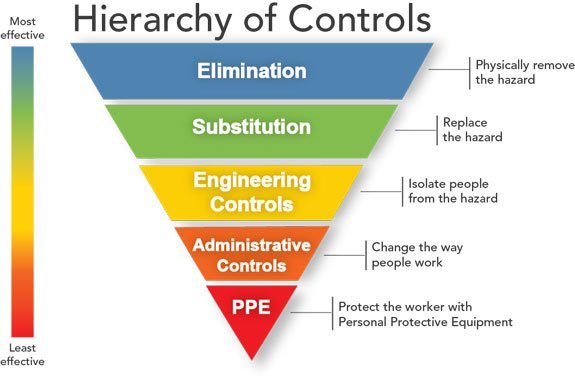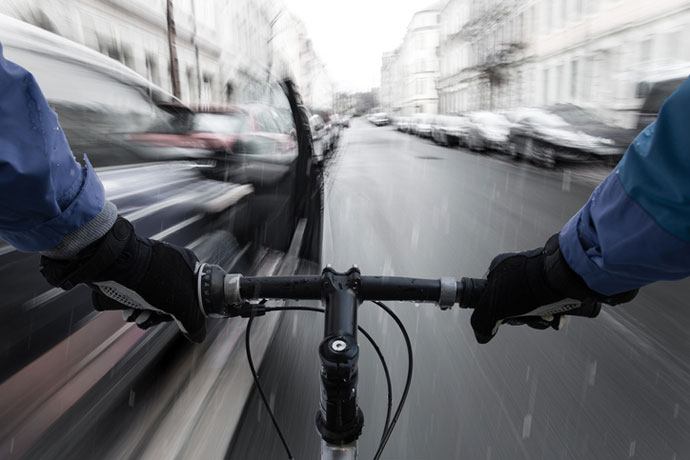
Revisions to the Highway Code revealed this week introduced the concept of a hierarchy of road users, which ensures that road users who can do the greatest harm have the greatest responsibility to reduce the danger or threat they may pose to others.
Responsibility of road users based on a hierarchy of risk is little more than common sense. When you next hear someone referring to the wearing of helmets and high-vis, or the delivery of enhanced driver training as guiding principles of road safety, refer them to the hierarchy of hazard control. The system is used across industry to minimise or eliminate exposure to hazards and it has as much relevance to road danger reduction as it does to reducing injuries on a car assembly plant.

Control methods at the top of graphic are more effective and protective than those at the bottom. It’s a common sense approach that rates physical separation above the wearing of polystyrene hats as a means of protecting people riding bicycles from HGVs. As a wise person once said, “If the answer is a cycle helmet, you’re asking the wrong question.”
We have yet to implement a systematic approach to the reduction of road danger. While it’s true that road deaths have fallen over recent decades, figures mask the fact fewer of us now walk and speeding traffic ensures it’s no longer considered safe to allow children to play on the streets.
The revised Highway Code also clarifies existing rules on pedestrian priority on pavements and that drivers and riders should give way to pedestrians crossing or waiting to cross the road. It also establishes guidance on safe passing distances and speeds when overtaking cyclists or horse riders, and ensures that they have priority at junctions when travelling straight ahead.
We’re still waiting for presumed liability
At present, there are only 5 countries in Europe that have yet to introduce the concept of presumed liability to their legal systems: Malta, Cyprus, Romania, Ireland, and the UK.
Presumed liability makes motorists financially liable for collisions with pedestrians or cyclists. Only when the pedestrian or cyclist is proved to be negligent does the driver avoid paying compensation through their insurance. The principle recognises that the drivers of faster, heavier vehicles have a duty of care, and that if a pedestrian or cyclist is injured in a road traffic collision, injuries or shock may make it difficult for them to accurately recollect the event.
Presumed liability is not a panacea, but if Britain is serious about promoting cycling then it’s vital we fall in line with the majority of countries on the continent.

According to the campaign group Roadshare, “Presumed liability in civil law is the proper approach for a mature, socially conscious nation as it addresses the unacceptable human cost of the current system. Under presumed liability, injured vulnerable road users are properly and promptly cared for and not forced to fight for compensation.”

The Times covered the campaign for presumed liability back in 2015
At present, motor insurers routinely argue for reductions in compensation to vulnerable road users injured in road traffic collisions, even in the face of evidence that their customers are at fault.
Even cities in the home of the car are making law to protect cyclists. Los Angeles city council is one of a number of American cities to being in new laws to protect cyclists against harassment by motorists. Such laws discourage dangerous behaviour toward cyclists and provide another tool with which to prosecute offending drivers.
The ethical choice
The ETA was established in 1990 as an ethical provider of green, reliable travel services. Over 30 years on, we continue to offer cycle insurance , breakdown cover and mobility scooter insurance while putting concern for the environment at the heart of all we do.
The Good Shopping Guide judges us to be the UK’s most ethical provider.

0 Comments View now